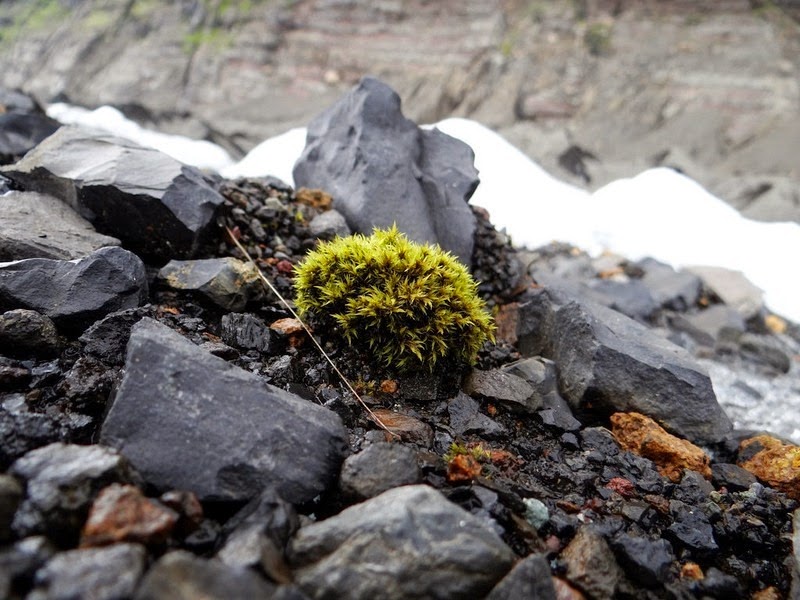The old proverb that states that “a rolling stone gathers no moss” has been passed along for so long that people generally believe that its literal meaning is true, but we only have to look at nature to see otherwise. While an actual rolling pebble might be hard to find in your backyard, they have been observed in plenty on glacier surfaces. High winds and the constant, if slow, motion of glaciers roll these tiny pebbles and dust around. And guess what? they are covered in moss on all sides. They are called Glacier Mice.
Glacier Mice form when moss starts growing around clumps of sand or a tiny rock lying on the glacier surface, and over time develops into a layer of moss. The moss continues to grow and insulates the glacier surface, resulting in the moss becoming elevated on a pedestal as the surrounding ice melts. Eventually, the moss falls from this pedestal which is then picked up by blasts of strong wind blowing across the glacier. These clumps of dust and organic matter roll around the vast sheets of ice like tumbleweed and the moss ends up growing on all sides. After years of growth, the clumps look like mouse-size green balls of vegetal fluff, and thus their name. Glacier Mice have been mostly documented over glaciers in Iceland, North and South America and the Himalaya.
Glacier mice are fluffy and sponge-like and have the capacity to hold water. The protective moss layer also cuts the wind and keeps temperatures slightly warmer than those on the ice, and combined with the moist environment, glacier mice have been found to provide suitable living quarters for many invertebrate species. When a group of European researchers looked inside some glacier mice they collected in Iceland, they found them to be teeming with life. Inside the mice, the researchers found Collembola (six-legged insectlike creatures commonly known as springtails), tardigrades (tiny eight-legged moisture-loving creatures that are often called water bears) and simple nematode worms. Up to 73 springtails, 200 tardigrades and 1,000 nematodes was recorded inside just a single mouse.
An individual mouse exist for only a few years before falling apart. When they do, the inhabitants just move to another mouse when wind causes them to collect in a small area.

Sources: NY Times / University Centre in Svalbard






















Comments
Post a Comment